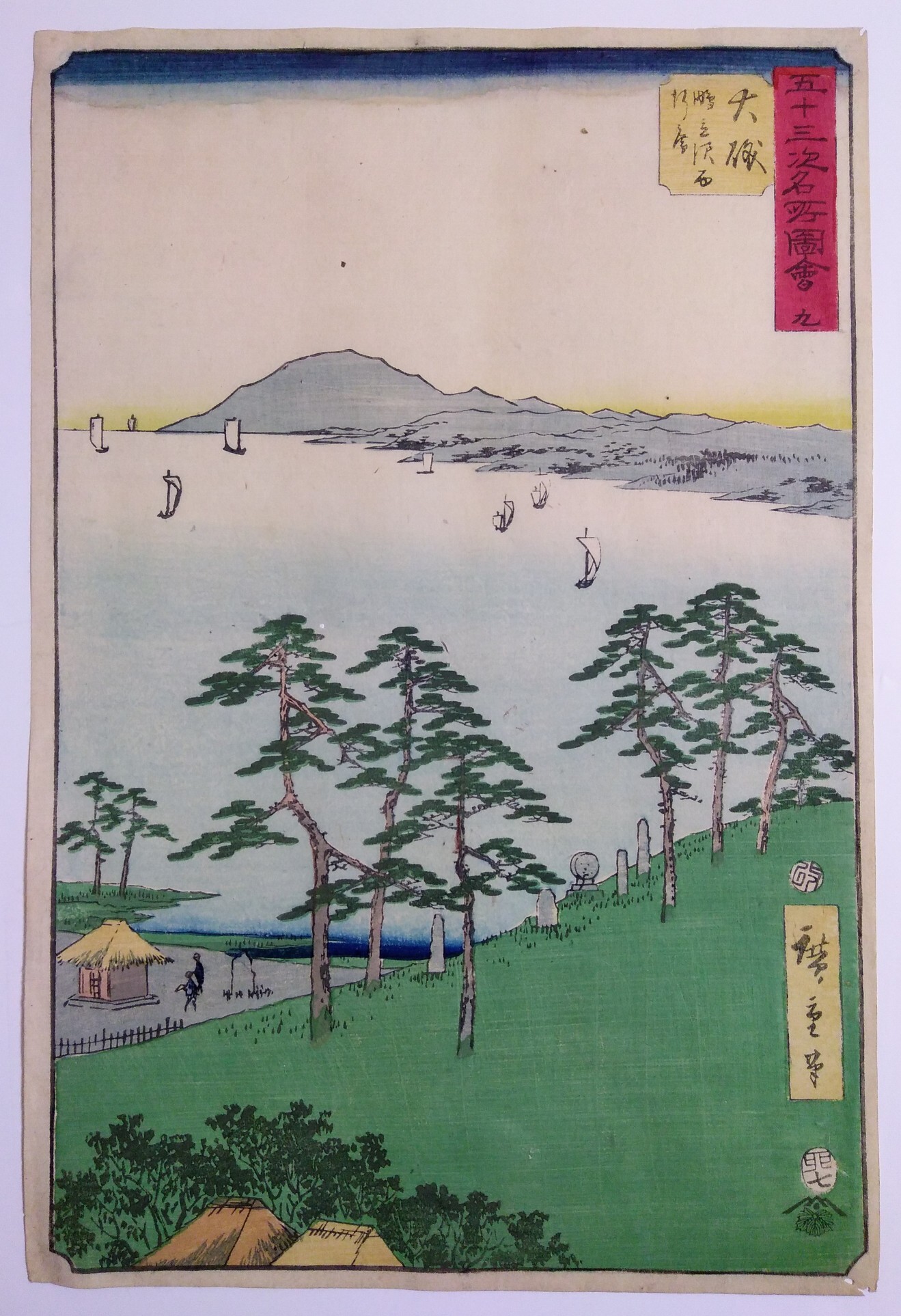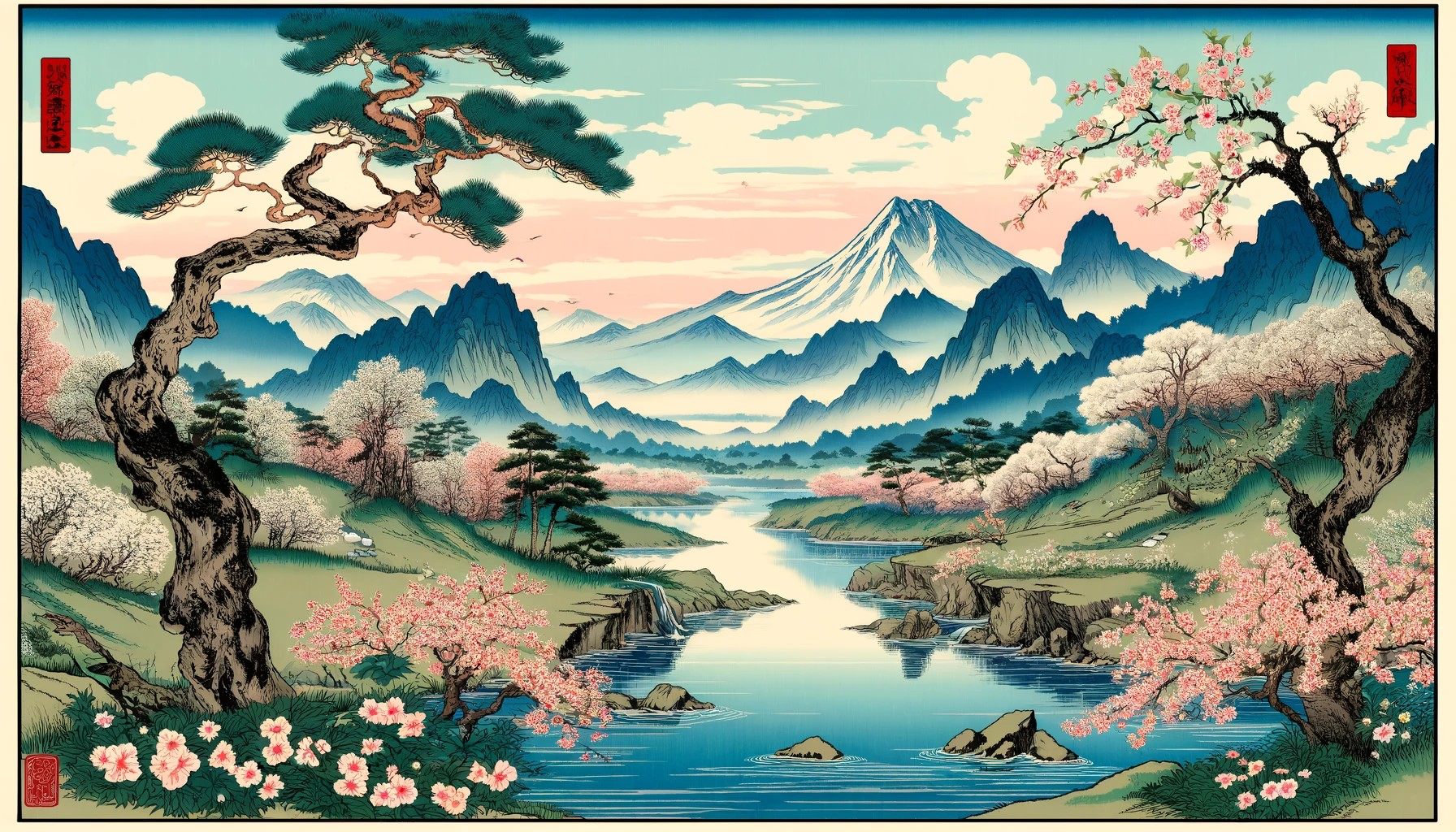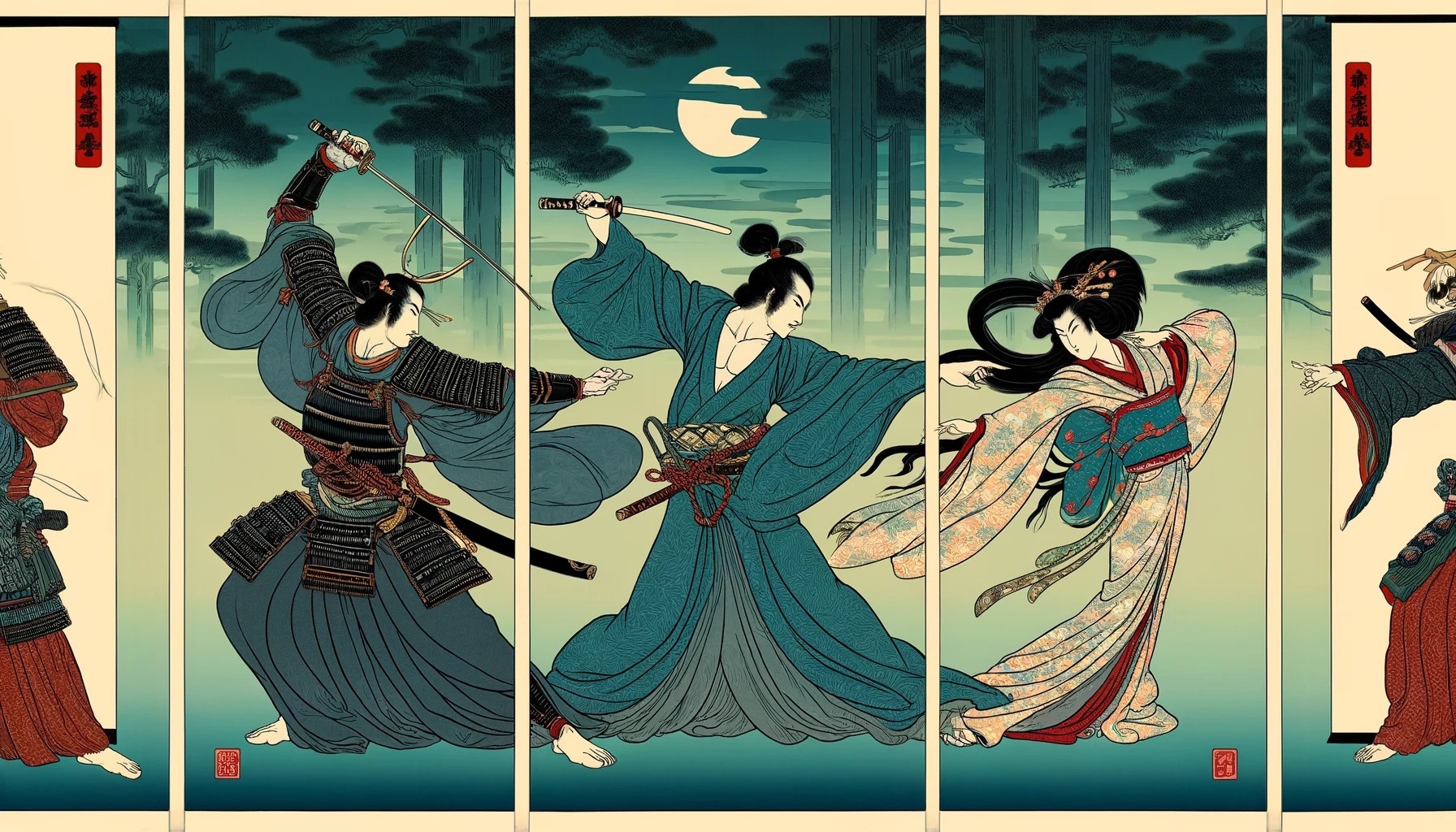
Author: Utagawa Hiroshige (歌川広重), aka Andō Hiroshige (広重安藤).
Subject: Ōiso: Saigyō's Hermitage at Snipe Marsh (Ōiso: shigitatsusawa saigyōan, 大磯: 鴫立沢西行庵).
Series: Famous sight of the fifty three stations (gojūsan tsugi meishō sue, 五十三次名所図会).
Number: 9/53.
Genre: meisho-e (名所絵), fūkei-ga (風景画).
Size: large (ōban, 大判).
Publisher: Tsutaya Kichizō (蔦屋吉蔵).
Period: c. 1855.
Trimmed: yes
Backed: no
Code: HSA01001
Condition: good condition. Color lightly shows the sign of time but is stll clear with good saturation. There
are not remarkable wrinkles nor creases. Any sign of fixing. Some stain on upper side, just under the sky. A tiny hole
in the center and in bottom right corner. It has not been backed.
Ōiso is a town of the Kanagawa prefecture (kagawa ken, 香川県) facing the Sagami bay (Sagami wan, 相模湾).
In the ancient time, before the Taika reform (Taika no kaishin, 大化の改新) of 645 a.d it was part of the domain
controlled by the Shinagano clan.
With the introduction of the Ritsuryō reform (Ritsuryō sei, 律令制), when the Shinano clan domain was unified
with the Sagamu's one, Ōiso became part
of the Yurugi district (Yurugi gun, 余綾郡) of the newly born Sagami country (Sagami no kuni, 相模国).
At the northeastern side of Yurugi's boundaries broaden Ōsumi (Ōsumi gun, 大住郡) lived a community of people
came from Goguryeo (Kōkuryō, 高句麗) one
of the three kingdoms existing in the Korean peninsula by that time.
During the Nara period (Nara jidai, 奈良時代) and Heian period (Heian jidai, 平安時代), a timespan which spread from
710 a.d to 1185 a.d it was the place
where provincial office (Kokufu, 国府) was established by imperial court of Kyōtō.
Thanks to the mild temperature and warm climate of the area attention towards Ōiso has been growing up in
recent times as tourist and visitor more
often spend time to one of its health resorts or swimming area.


